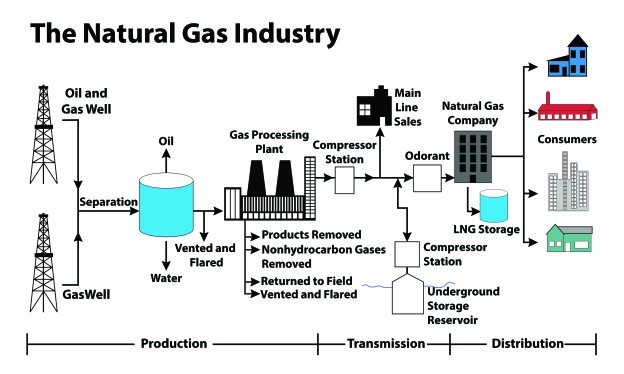From Dinosaurs to Fossil Fuels

From Dinosaurs to Fossil Fuels
Since the year 1,000 B.C., civilization has been taking advantage of the many benefits natural gas provides to our everyday lives. As a common ingredient found in certain products such as paints and medicines, along with the fuel that powers our favorite appliances, natural gas has quickly become an essential energy source and component to our survival.
Just like coal and oil, natural gas was formed from organic remains of prehistoric plants and animals. These remains were then subject to intense heat, being covered by layers of sediment. Between the heat of the Earth’s core and the pressure from the layers, these plants and animals eventually transformed into natural gas. While some natural gas rises towards the surface and dissipates in the air, the majority of the fossil fuel is found deep underground. Oil and natural gas are often found in similar areas, which is located hundreds of meters below the seabed.
As one of the major fossil fuels, people are willing to go through great lengths to obtain this combination of carbon and hydrogen. Knowing this, the journey that gas takes to get from the well to your appliances has truly been perfected over the years. Follow the step-by-step process natural gas takes to get to your home:
- Natural gas companies drill deep into the ground. They use big wells and pumps to bring natural gas to the surface
- Gas gets sent to your town through high pressure gas transmission lines that are buried underground. These lines are controlled by utility companies through lower pressure gas mains
- The gas mains controlled by the utility companies connect to the meter outside of your house via lateral residential gas service lines. This allows your natural gas usage to be measured as well
- Downstream service lines connect the meter to all gas appliances located in your home/building

The natural gas industry utilizes a method that creates both the safest and most effective transfer of gas. While housed deep underground, it hasn’t been easy to figure out the best solution to obtaining it. But now, thanks to gas wells, pipelines, underground storage reservoirs, gas meters and more, this fossil fuel will continue heating your home and fueling your appliances!
